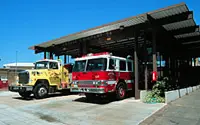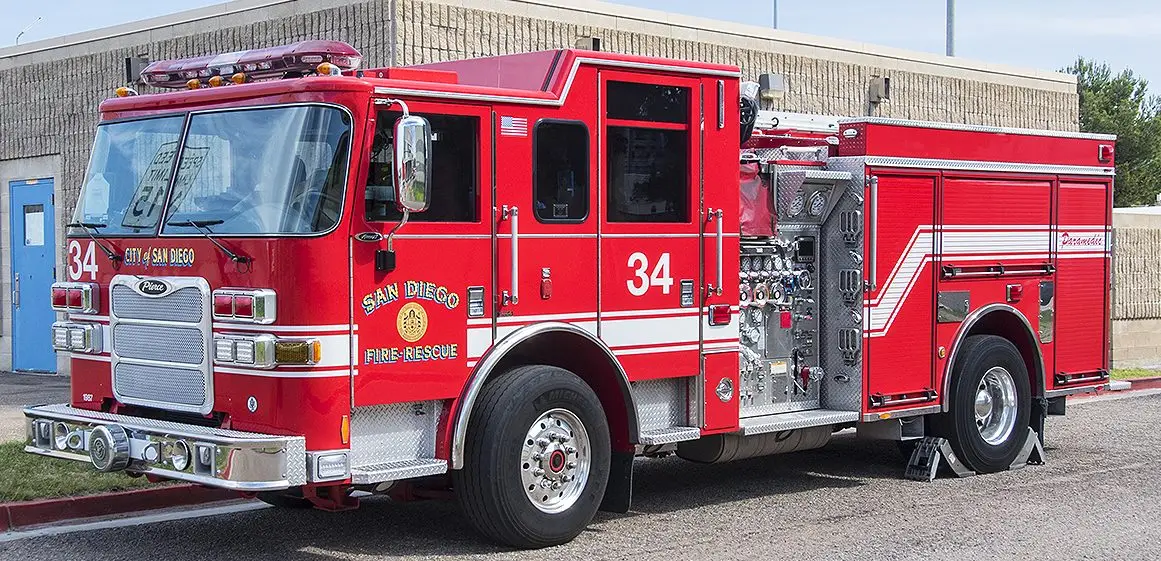It should come as no surprise that, in many ways, all fire stations are alike. Physically, they are basically the same; a great big “garage” called the apparatus floor, a big kitchen with four refrigerators*, a commercial stove, and a dining table. There are also sleeping rooms for at least four crew members, an office for the captain, lots of equipment storage, a workout space that might be on the apparatus floor, and a common room they call the bullpen, with some recliner chairs and a TV.
But at the same time, every fire station is different too. Stations 1, 2, and 4 are downtown. Their calls come from high rises, commercial buildings, condos. Some stations have industrial complexes in their district with chemicals and toxins; many others are primarily residential. In past months, we’ve introduced you to several specialty stations that do equipment repair and inspection in addition to their regular duties. Wherever they are, the majority of their calls are medical aids. About four percent of calls are fires.
Working with neighboring fire departments
 Stations that border other jurisdictions work back and forth with the fire departments in those cities. San Diego got agreements with those neighboring cities several years ago to institute “boundary drop,” which means that dispatchers send the nearest available engine or truck, regardless of who it belongs to.
Stations that border other jurisdictions work back and forth with the fire departments in those cities. San Diego got agreements with those neighboring cities several years ago to institute “boundary drop,” which means that dispatchers send the nearest available engine or truck, regardless of who it belongs to.
Station 34 on Cowles Mountain Boulevard is at the city’s eastern edge and serves the San Carlos community. Since boundary drop began, the crews there find themselves working back and forth with the La Mesa Fire Department quite a bit. Almost half their calls are either in La Mesa or with a La Mesa crew.
Station 34 has one crew but two rigs. In addition to Engine 34, it is one of eleven stations that has a brush engine. It gets called to brush fires large and small in canyons or hillsides where it’s difficult for conventional engines to go. That means that hiking up and down while carrying hose and chain saws is just another part of the job. It’s also one of the stations dispatched to calls at Mission Trails Regional Park.
Engine companies are usually dispatched first for injuries or illnesses on Cowles Mountain. Captain Jeff Oliver says, almost without fail, Engine 34 is the crew that hikes the mountain when someone has fallen or has a medical problem while hiking. If they can’t carry the patient down the mountain, the Fire-Rescue helicopter is called in to hoist the patient out. But not before the firefighter and paramedic from Station 34 have carried their gear up and assessed the situation.
Before the pandemic, Station 34 played host to many scout troops and school classes and visited classrooms with fire safety messages. That all screeched to a halt citywide early last year and hasn’t been started up again. The crews, and the kids, are looking forward to that day.
* You might be wondering about the four refrigerators. There are three shifts in every fire station — A, B, and C. The crews on each shift buy their own groceries with their own money and do their own cooking. The City doesn’t feed the firefighters. They figured out a long time ago that the best way to keep their groceries separate was to have separate storage. So, separate shelves and separate refrigerators for each shift. And the fourth one? Well, you don’t really need three bottles of ketchup, or mustard, three jars of relish, salsa, or mayonnaise. The fourth refrigerator is for condiments for all crews to share. It works out pretty well.
The September Station of the Month is sponsored by Farmers Insurance Agent Amber McWhirter and Farmers Insurance.



